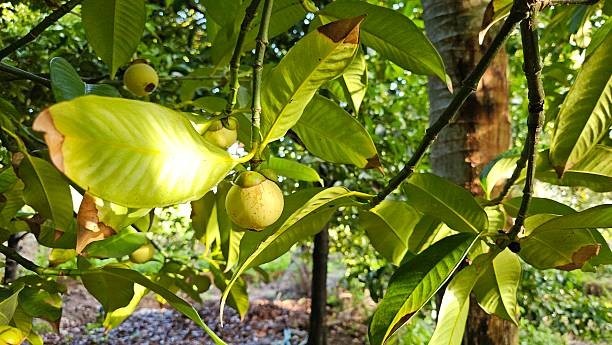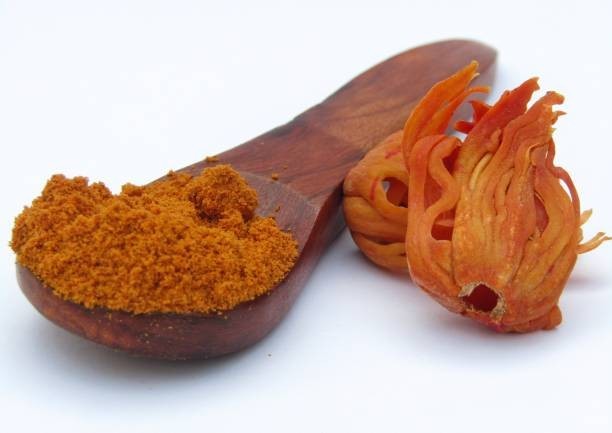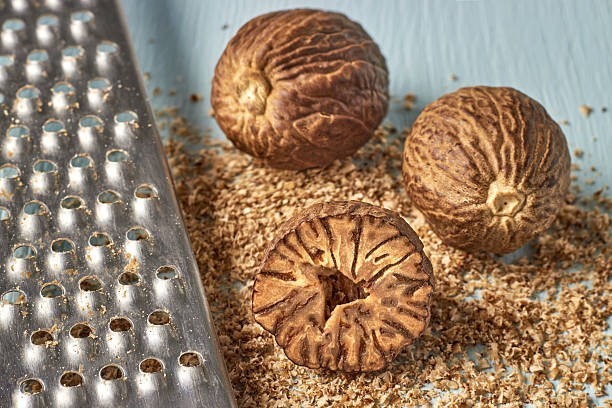views
#NutmegFacts #SpiceLovers #FoodTrivia #NutmegLove #CookingTips #SpiceHistory #NutmegPower #KitchenKnowledge
1. Nutmeg Comes from a Tropical Evergreen

Nutmeg isn’t just a spice—it’s the seed of the Myristica fragrans tree, a tropical evergreen native to the Spice Islands (now part of Indonesia). The tree produces both nutmeg and mace, two distinct spices from different parts of the same fruit. Nutmeg comes from the seed, while mace is the dried lacy covering around it. This makes Myristica fragrans unique for producing two valuable spices in one fruit. The tree thrives in hot, humid climates and can grow up to 60 feet tall, producing hundreds of fruits each year. Nutmeg’s tropical origins explain its warm, rich, and exotic flavor.
2. Nutmeg Was Once Worth More Than Gold

During the 16th and 17th centuries, nutmeg was so valuable in Europe that it was traded at prices higher than gold. Its scarcity and high demand fueled fierce competition among colonial powers like the Portuguese, Dutch, and British. Control over the Spice Islands meant control over the nutmeg trade, and bloody conflicts often erupted over this small seed. In fact, the Dutch even traded Manhattan to the British in 1667 in exchange for a small Indonesian island that produced nutmeg. Today, nutmeg is affordable, but its history as a symbol of wealth and power remains fascinating.
3. Nutmeg Contains a Natural Compound That Can Be Toxic

While nutmeg is safe in small culinary amounts, it contains a compound called myristicin, which can be toxic in large doses. Consuming large quantities—several teaspoons or more—can cause dizziness, nausea, hallucinations, and even organ damage. Historically, people have experimented with nutmeg for its psychoactive effects, but such use is dangerous and not recommended. In the kitchen, a pinch or two is enough to bring out its warm, nutty aroma without any health risks. This potent property is a reminder that spices, like many natural plants, have both culinary magic and powerful chemical effects.
4. Mace and Nutmeg Are Siblings

Nutmeg and mace come from the same fruit but are very different in flavor and appearance. When the fruit of the Myristica fragrans tree splits open, it reveals a brown seed covered in a bright red, lacy layer called the aril. The dried aril becomes mace, which has a more delicate and slightly peppery flavor compared to nutmeg’s warm sweetness. In culinary use, mace is often preferred in light-colored dishes because it doesn’t darken the food. This unique dual-spice feature makes nutmeg trees especially prized in the spice trade and adds to their historical importance.
5. Nutmeg Has Ancient Medicinal Uses

Nutmeg has been used for centuries in traditional medicine across Asia and the Middle East. Ancient healers believed it could improve digestion, relieve pain, and even boost brain function. In Ayurvedic medicine, nutmeg is considered a warming spice that can help balance the body’s energies. It was also used as a remedy for insomnia and to freshen breath. While modern science supports some of these claims—thanks to nutmeg’s antioxidant and anti-inflammatory compounds—it’s important to use it in moderation. Its long history in both cooking and healing highlights nutmeg’s versatility and cultural significance.
6. The Dutch Guarded Nutmeg Trees with Extreme Secrecy

In the 17th century, the Dutch controlled the nutmeg trade and took extreme measures to keep their monopoly. They planted nutmeg only on specific islands in Indonesia and guarded them fiercely. Foreigners were banned from visiting, and penalties for stealing nutmeg seeds were severe—even death. To further protect their control, the Dutch coated nutmeg seeds in lime to prevent them from germinating if smuggled. Despite their efforts, nutmeg trees eventually spread to other parts of the world, breaking the Dutch monopoly and making the spice more widely available.
7. Grenada is Known as the “Island of Spice”

Today, the Caribbean island of Grenada is one of the world’s largest nutmeg producers and proudly displays a nutmeg on its national flag. Nutmeg was introduced to Grenada in the 19th century, where the warm, humid climate proved perfect for cultivation. The spice became a key part of the island’s economy, cuisine, and culture. Visitors to Grenada can tour nutmeg processing stations, taste fresh nutmeg syrup, and even buy nutmeg-themed souvenirs. The island’s deep connection to nutmeg has helped it gain recognition as a global spice hub.
8. Nutmeg Can Enhance Both Sweet and Savory Dishes

Nutmeg is most famous for flavoring desserts like pies, custards, and cookies, but it’s equally delicious in savory dishes. A pinch of nutmeg can elevate creamy sauces, mashed potatoes, roasted vegetables, and even meat dishes. In Italian cuisine, it’s often added to spinach and ricotta fillings for pasta. In Middle Eastern cooking, nutmeg is used in spice blends for meats and stews. Its versatility comes from its warm, slightly sweet flavor, which blends well with other spices and enriches both sweet and savory recipes without overpowering them.
9. Nutmeg Was Once Believed to Ward Off Plague

During Europe’s deadly plague outbreaks, nutmeg was considered a protective charm. People carried nutmeg in pomanders (small containers) or wore it around their necks, believing the spice’s strong aroma could purify the air and keep disease at bay. Wealthy families would place nutmeg on their tables not only as a luxury but also as a supposed safeguard against illness. While we now know nutmeg can’t stop the plague, this belief reflects the spice’s esteemed status and the lengths people would go to protect themselves during history’s darkest times.
10. Freshly Grated Nutmeg Tastes Very Different from Pre-Ground

Many home cooks don’t realize that freshly grated nutmeg is far more aromatic and flavorful than store-bought pre-ground nutmeg. Whole nutmeg seeds can be stored for years without losing potency, and when you grate them fresh, they release essential oils that quickly fade once exposed to air. This results in a richer, more vibrant taste in your dishes. Professional chefs and bakers often keep a small nutmeg grater in their kitchens to get that fresh burst of warm, nutty aroma. If you’ve only used pre-ground nutmeg, try fresh—you’ll never go back.




















Comments
0 comment